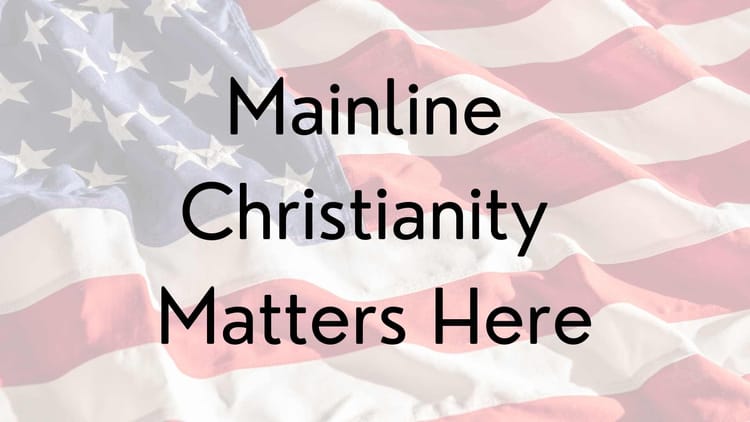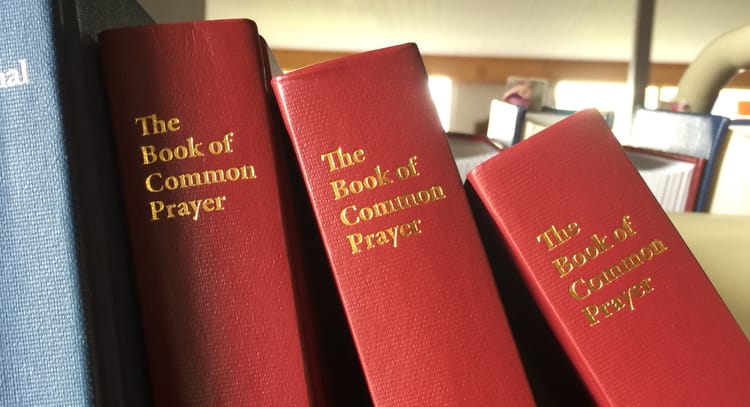A Time to be Pruned

Tom Ferguson recently posted a manifesto on the coming collapse of the Episcopal Church. I was relieved to read it. Perhaps because the numbers are so daunting, we’ve been reluctant to name the elephant in the middle of the room. But if we don’t name it, we won’t be able to discuss it… and if we don’t discuss it, we won’t be able to make any progress.
I hear that if you need to eat an elephant, you do it one small bite at a time. It’s impossible to start taking those small bites when you don’t know there’s an elephant to be eaten.
I’d like to take a closer look at this situation with some data and my reflections on it. This is what I think about late at night on my own and it would be nice to think with some other people for a change. So, I look forward to your comments. If any of you are thinking about this on your blogs, or reading about it elsewhere, I’d love to know where to look.
First, some data. I recently stumbled across this chart, published by the Evangelical Lutheran Church in America. Take a quick look at it, especially noticing the last two lines:
Do you see what I see? The rate of decline is slow from about 2003 until 2009. But in 2010, the rate of individual decline jumps from about 2% to about 6%. Why? There’s a logical correlation with the fact that in 2010, the number of churches closed goes from under 100 to over 300.
How does this apply to the Episcopal Church? The next few charts indicate the answer. The first two are from this report available to the church from our Department of Research and Statistics. 
 The first chart shows that a solid majority (56%) of the Episcopal Church is over 50 years old. (I love people over 50! Some of my closest friends are people over 50!)
The first chart shows that a solid majority (56%) of the Episcopal Church is over 50 years old. (I love people over 50! Some of my closest friends are people over 50!)
The second chart shows that a solid majority of our smallest parishes (those who have under 50 people in worship on an average Sunday) include at least 35% over the age of 65. (I love people over 65! Some of my most cherished mentors are over 65!)
But, even though I love people over 50 and people over 65 (and I do!), data reported to the Executive Council in January (slide 17) shows that congregations with more older members are less likely to grow.
Remember the figure above that showed that a solid majority of our smallest churches included at least 35% people over 65? Let’s connect that fact with another: the Episcopal Church is made up largely of small congregations. In 2008, half of all Episcopal parishes had an average Sunday worship attendance of 70 or fewer. (See below.)
Here is the conclusion I draw from the data above (if I’m wrong, that’s what comments are for):
If half of the Episcopal Church’s congregations average fewer than 70 people in worship…
and more than half of all congregations with under 100 people on an average Sunday include at least 35% people over 65…
then at least a quarter of the Episcopal Church’s congregations include at least 35% of people over 65.
Given that we know more than half of the Episcopal Church’s population is over the age of 50, I think it is fair to say:
More than a quarter of the Episcopal Church’s congregations include more than 35% people over 65. If they mirror the overall age of the church, they may be made up of more than 50% people over 50.
And… if congregations with older populations are less likely to grow…
It is quite likely that we will soon find ourselves in a position much like the Evangelical Lutheran Church in America, with a significant uptick in the number of congregations closing and a similarly significant uptick in the rate of numeric decline.
The Episcopal Church has the same information available to us as is available to the Evangelical Lutheran Church in America. I took the information available in this report and organized it the same way the ELCA organized their chart above. It shows that this hasn’t happened in the past five years. (Afterwards, I found this chart with 2000-2010 data, showing it hasn’t happened in the last 10 years either.):

Like the Lutherans, the last year for which we have data available is 2010. At this point, we are cruising along with a moderate rate of decline, losing less than 2% of churches and 3 to 4% of individuals. Not great, but not calamitous.
However, given data showing that our parishes tend toward the smaller side, our age range is high, and older congregations tend not to grow, it is reasonable to assume that in the future we will be closing more parishes. (This assumes that mortality as a result of advanced age continues to be part of the human condition. I think this is a reasonable assumption.)
We also know that in 2010, the Episcopal Church had 286 congregations with an average Sunday attendance of 10 or fewer, which is 4% of all Episcopal congregations. It is my best guess that unless change occurs in these churches, a majority of them will close in the next ten to twenty years.
At this point we are not opening as many congregations are we are closing… not even close (see slide 15):

And this is the case even though new congregations are apparently more able to integrate newcomers than established churches are (see page 2 here):

If these trends continue, one of these years we will close 200+ more churches than we open. When that year comes, we will see a significantly greater rate of decline than we have seen thus far. Unless something changes, that year is coming.
At this point, this is all still projection. But if these trends continue, then at the diocesan level we will find ourselves in the following situation:
- Loving people who are wondering if God’s will for them is the closure of their church
- Loving people who are grieving the loss of their formerly vital, beloved church
- Loving people who don’t understand what God is doing in their hearts, their lives and their communities
- Owning buildings that are no longer stewarded by an active, local congregation
- Deciding if we are selling property into a depressed market (If current trends continue, many mainline and evangelical denominations will be attempting to sell church buildings.)
- Trying to figure out how to engage in ministry with isolated Episcopalians and seekers who no longer have a vital Episcopal church home in their local community
- Trying to figure out if we should attempt to replace the income that we used to receive from the congregations that no longer exist, cut expenses, and/or merge with other dioceses to cut costs.
In summary, this will be our situation:
- fewer people… and more opportunities for mission and evangelism
- less annual operating revenue… and more assets on our balance sheets
As I reflect on all this, I wonder what God is doing in our midst and what God calls us to do as servants of His mission in the world. Recently we read John 15: Jesus said, “I am the true vine, and my Father is the vinegrower. He removes every branch in me that bears no fruit. Every branch that bears fruit he prunes to make it bear more fruit.”
I do not believe that God is ending the life of the Episcopal Church. But it surely appears that God is pruning the Episcopal Church. Over the next twenty or thirty years of our life together, we will live with the pain of that pruning process. At the same time we will need to seek the renewed life, the gift of bearing fruit, that is God’s promise for God’s people. How might we live the promise that this time of pruning is for the greater purpose of bearing fruit for God’s kingdom?
Perhaps the answer is this:

We have to start naming the road we’re on,
and asking God to show us another way.
* * * * *
If you’ve read this far, please read this second post with some clarifying thoughts and links to further data.








Member discussion